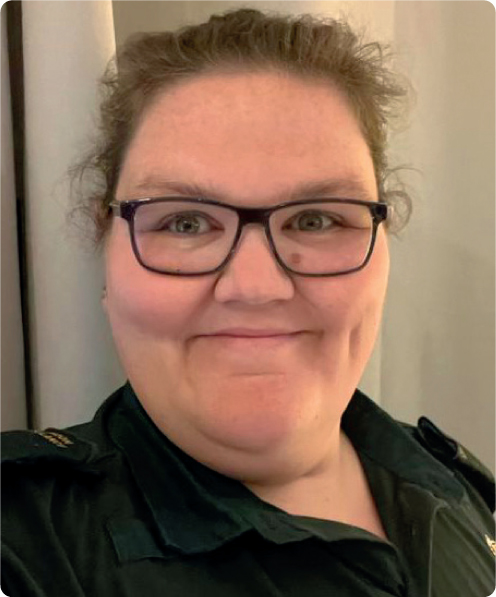
I joined the London Ambulance Service (LAS) in November. Throughout the last 7 months, I have completed clinical induction, blue light driving, Operational Placement Centre and 4 months ‘on the road’ as a paramedic. During this time, I have completed roughly half of my newly qualified paramedic (NQP) portfolio, which is a requirement of the LAS to progress to NQP2. I have spent most of my time at Isleworth in the Northwest sector of London. This brought its own challenges, being an area of high deprivation and low socioeconomic status. This brought about incidents where access to healthcare is limited and patients are waiting until they are very unwell until they phone for an ambulance. I found that a lot more of these patients ended up on the other end of a blue call and rapid extrication to hospital—far more than what my crew mates liked.
In April, I became an NQP2. With this, I moved to the Southwest sector of London, as a more permanent station closer to home, making the commute much easier. I have been paired with a new crew mate, this time a Trainee emergency medical technician (EMT). We are very similar, which makes work a breeze; it's never a hard day when you have a good crew mate by your side.
One bright Monday morning, 15 minutes prior to shift starting at 11 am, a member of the public knocked on the windows at station to inform us that an elderly lady had fallen over and needed help. With my brew in hand and crocs still on my feet, I put the brew down, grabbed the keys to the vehicle and drove the 50 yards to the alleyway where the patient was. It is the first time I have had a major trauma patient, which ultimately, I ended up treating and running into hospital with crocs, prior to my shift—and all before the morning team huddle had even started. I made a swift return to station after handover to collect a cold brew and my boots.
In the same week, I also tended to another major trauma patient; this time it was a stabbing. A work-man presented to the side of my ambulance with a knife still protruding from his leg. This was a huge shock. Although you do receive training in university for trauma/stabbings and other injuries, until the moment it is in front of your eyes and actively pumping out blood from an artery, nothing quite sinks in. Shouting for further help, gloves, tourniquet and oxygen, other colleagues looked at me a bit strangely until I also added it was a stabbing.
Since finishing university, I admit I have felt a bit lost. For the last 3 years I have had to maintain employment on average of about 25 hours per week, plus university lectures, assignments and placement. Once university finished, I lost most of those things, and all that was left was full-time employment. So, I re discovered my love for St John Ambulance.
Although in a previous column, I wrote about receiving the Service Medal of the order, I had not been as active with St John in some time. Throughout May and June, I volunteered covering the Trooping of the Colour events on Horseguards parade for the event, which took place on 15th June. These events are a change of pace from ambulance shifts; it has been a nice time to reflect on my journey, and my decision to leave Manchester and join the LAS—a fresh start away from being a student and a clean slate to write the next chapters of my story.


